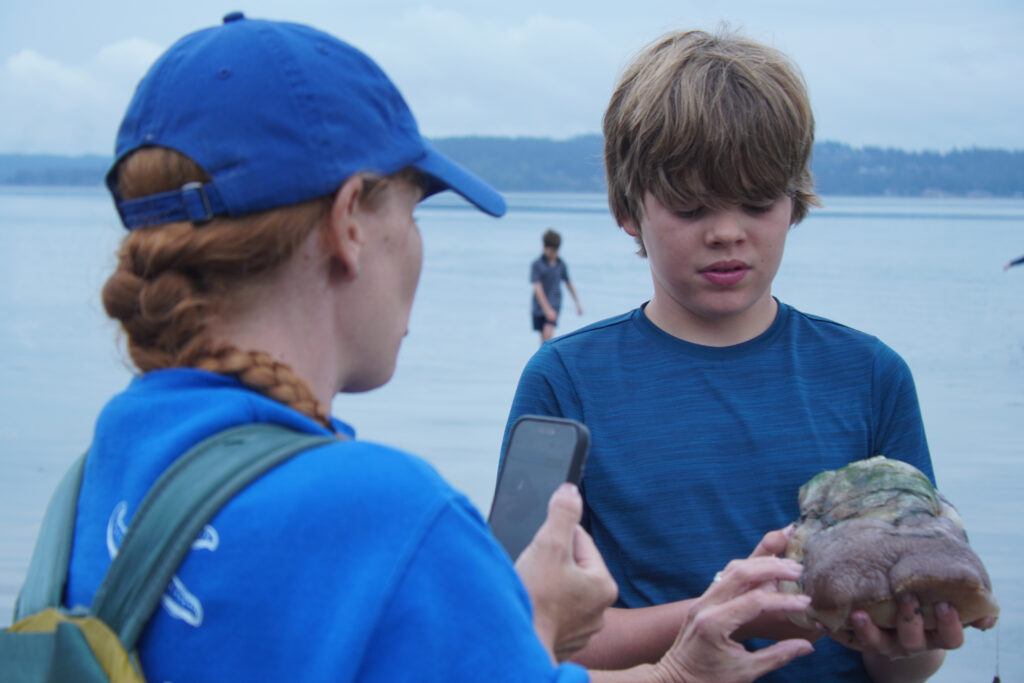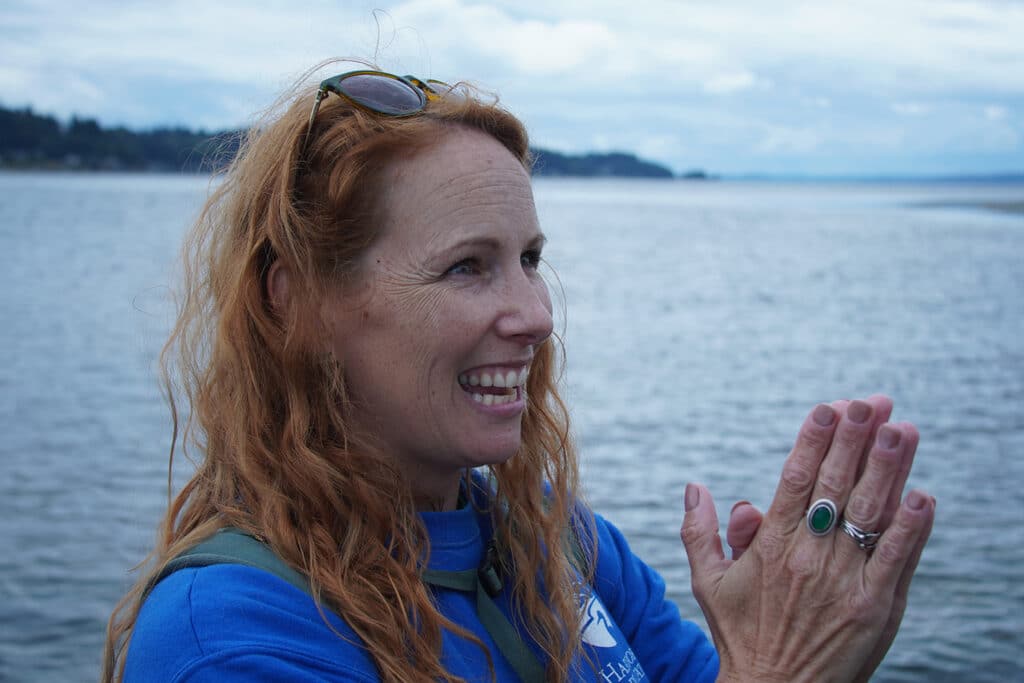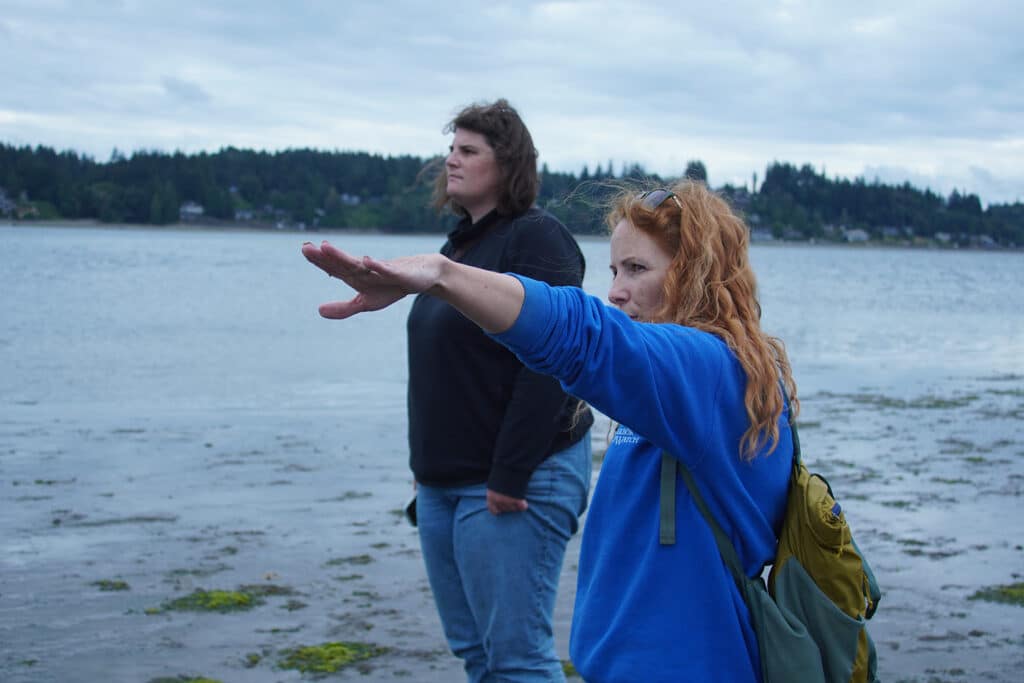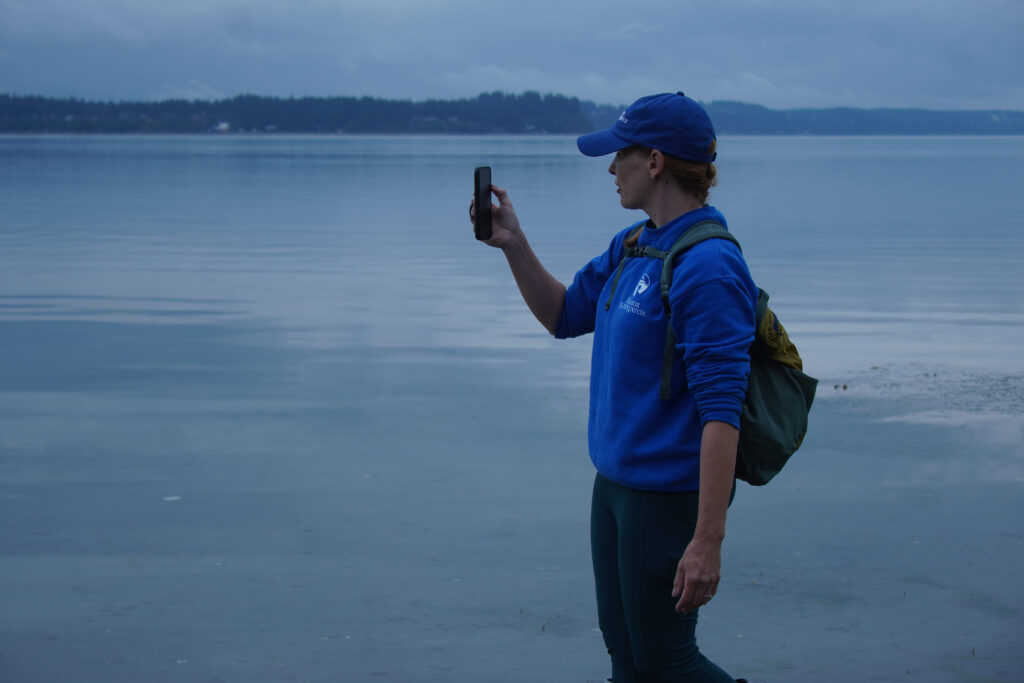Community Education Environment
Meet the face behind Harbor WildWatch’s TikTok success
When the pandemic forced beaches to close, Harbor WildWatch Education Director Rachel Easton saw an opportunity. If people couldn’t visit the tides, she would bring the tides to them online.
Education Sponsor
Education stories are made possible in part by Tacoma Community College, a proud sponsor of Gig Harbor Now.
“We transitioned all of our school programs and public programs to be digital, but we weren’t getting much traction. Streaming on Facebook, we’d get a few dozen people watching,” Easton said.
@harborwildwatch Tiktok took it down at 370k views. Reposting this once in a lifetime find. We even made it on the news for discovering it. #fyp #fish #learnontiktok ♬ original sound – Harbor WildWatch
Hoping to re-connect the Gig Harbor community to the low tides during the COVID-19 pandemic, Easton also launched Harbor WildWatch’s TikTok account.
“You go where the people go,” said Robby Nowlan, a Harbor WildWatch volunteer. With over 170 million Americans using TikTok, Easton quickly found success after posting a viral video in 2020 discovering a rare fish that washed up on shore.
Taking TikTok to the beach
TikTok requires users to surpass 1,000 followers to livestream. Harbor WildWatch’s TikTok immediately reached that benchmark.
“The tides were still incredibly low. We used our connections with the different parks to get permission because everybody closed,” Easton said.
Livestreaming from closed beaches accelerated the popularity of the TikTok account. At one point she was posting videos daily.
Before becoming Harbor WildWatch’s Education Director and a TikTok success, Easton began her career as an education specialist at the Point Defiance Zoo & Aquarium.

Harbor WildWatch’s Education Director Rachel Easton presents a moon snail to their livestream audience, found by a young boy during their low tide beach tours. Photo by Ronan Lynch
“In the line of educational content, you have to be really good at it to get a following, and the fact that we have such a large following as Harbor WildWatch speaks to how good we are at it,” Nowlan said. He also said that the intimacy of social media makes people more invested in watching educational content.
Nearly half a million followers
Four years later, the account boasts nearly 474,000 followers. Depending on when the live stream is, Harbor WildWatch’s TikTok account averages around 200 people.
“The most I ever had, we did a beach walk at Purdy at 11 p.m. and we had 40,000 people total. It was insane because we had over 2,000 people tuning in at one moment,” Easton said.
She said that the TikTok account has an international audience. Outside of Seattle, they get their most followers from the Texas cities of Houston and Austin.

Rachel Easton, education director for Harbor WildWatch, started the nonprofit’s TikTok account during the COVID-19 pandemic. In just a few years, it has grown to nearly 474,000 followers. Photo by Ronan Lynch
“They can watch content of us on the beach and learn about our local ecosystems even though they’re (hundreds) of miles away,” Nowlan said. He added that when they livestream at night, especially during winter when low tides occur during that time, most of the viewership comes from an international audience.
Although Harbor WildWatch wasn’t immediately on board with the TikTok account, opinions soon changed after witnessing Easton’s success. The account was also able to monetize content, generating money for Easton and the nonprofit.
Easton has also been able to leverage the popularity of Harbor WildWatch’s TikTok account to receive grants for the organization.
“Right now, Port of Seattle is paying us to make TikToks, I have to make 50 TikToks for them, and we just track that through the hashtag system,” Easton said. She said that the goal was to reach a million views during their current grant cycle, which has already been accomplished.

Rachel Easton guiding popular TikTok creator Geo Rutheford around the low tides of the Purdy Sand Spit in Wuana on Aug. 21, 2024. In early 2020, Geo Rutheford discovered Rachel Easton by scrolling down a list of educational TikTok accounts to send books to. Photo by Ronan Lynch
Getting the attention of influencers
Geo Rutheford, another educational TikTok creator who exploded in popularity during the pandemic, creates content covering her art and hydrology. During October, Rutheford posts her popular series “Spooky Lake Month,” in which she covers eerie lakes around the world.
“I don’t think I’ve ever seen an account doing what (Harbor WildWatch) is trying to do, which is provide this tag-along video type of content where it feels like you’re there with them in the experience,” Rutheford said.
Rutheford said that during the early stages of TikTok, the app was filled with videos of pranks and dancing. During COVID-19, the content shifted as many creators utilized the app for educational purposes.
“TikTok provides an opportunity for short-form content that gets information across quickly and efficiently and it’s not necessarily something that someone is seeking out so they can be kind of unexpectedly educated,” Rutheford said.

Rachel Easton guided her livestream audience through the low tides of Maple Hollow Park in Home, Washington, on Aug. 20, 2024. Photo by Ronan Lynch

